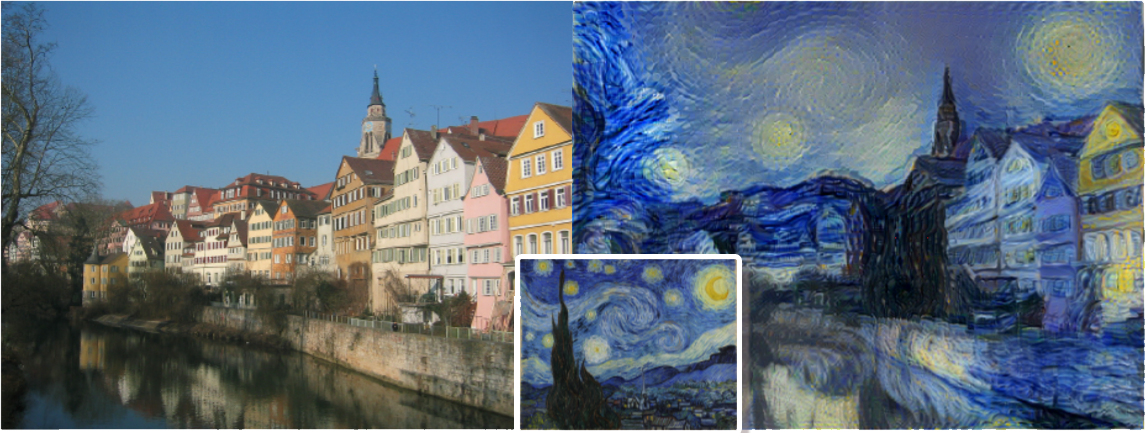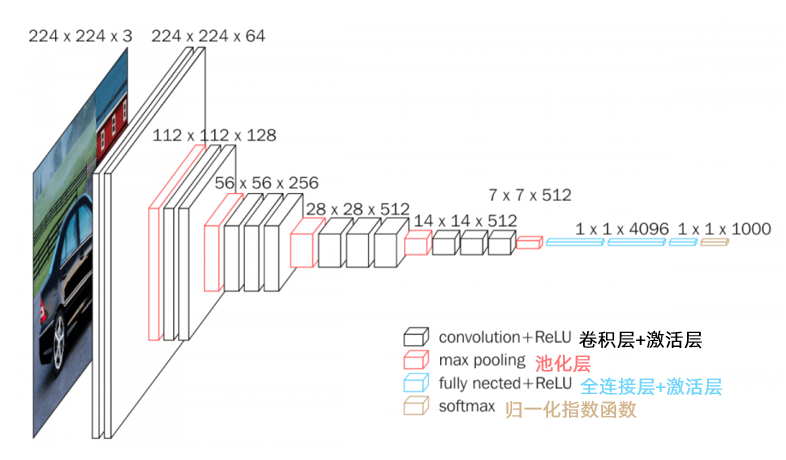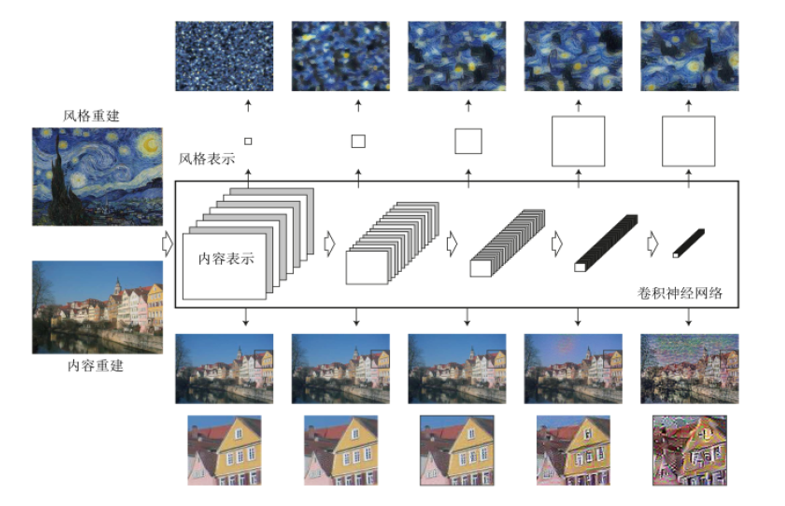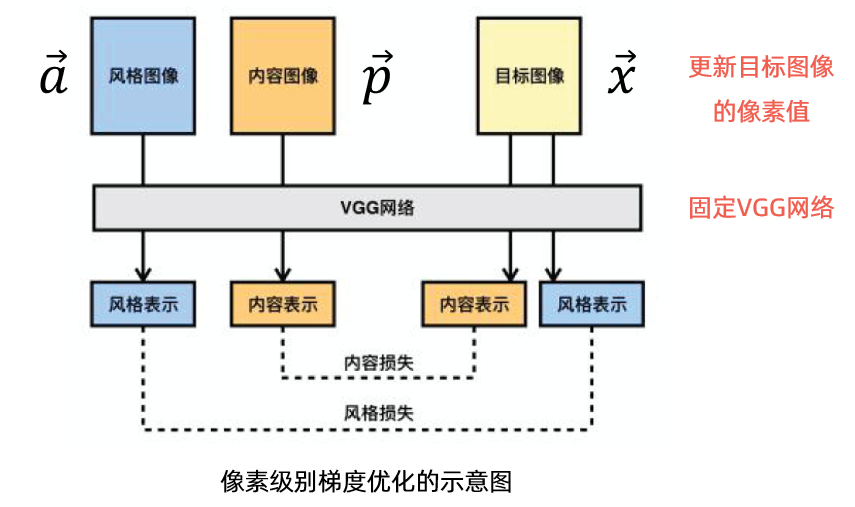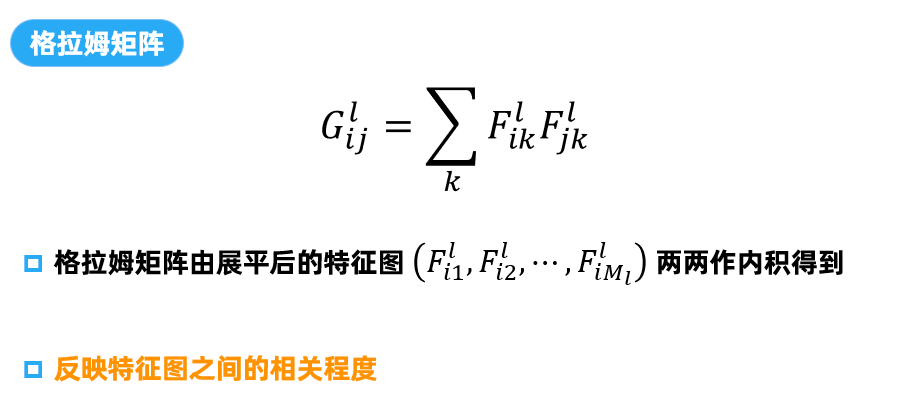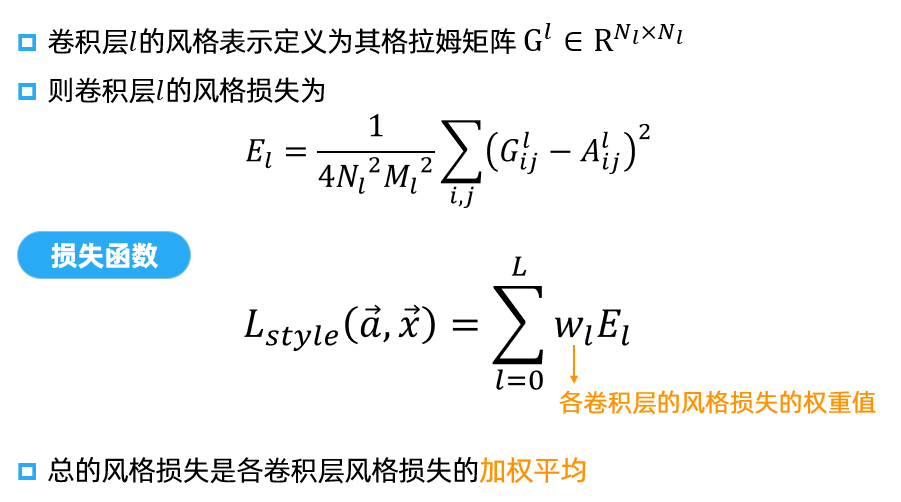导入必要的库¶
In [1]:
import numpy as np
# 用于图片预处理
from keras.preprocessing.image import load_img, img_to_array, array_to_img
# 导入后端,允许我们进行一些更加细节的操作
from keras import backend as K
# keras自带的VGG16网络
from keras.applications.vgg16 import preprocess_input, VGG16
# 用于显示训练结果
from IPython.display import display
# 优化器,用于最小化损失
from keras.optimizers import SGD, Adam
# 设置内容图片和风格图片的路径
content_image_path = '../input/knnstyletransfer/knn-styletransfer/content/02.jpg'
style_image_path = '../input/knnstyletransfer/knn-styletransfer/kNNstyle.jpg'
# 设置固定的图片大小
w, h = load_img(content_image_path).size
# 把长度设置为512像素,宽度成比例放大
height = 512
width = int(w * height / h)
图片读取和处理¶
In [2]:
def preprocess_image(image_path):
# 读入图片
image = load_img(path = image_path, target_size = (width, height))
# 将一张PIL格式的图像转化为numpy数组
image = img_to_array(image)
# 扩张维度
# 原来是一张图片 [长, 宽, 通道],加了一维之后变成 [批次, 长 ,宽 ,通道],
# 这是为了符合VGG16输入的格式
# 我们的输入都是单张图片,所以批次大小为1
image = np.array([image])
# https://github.com/keras-team/keras-applications/blob/master/keras_applications/imagenet_utils.py
# 将图片转化为VGG16读取的格式
# 将RGB转化为BGR, 各个通道减去平均值
image = preprocess_input(image)
return image
# preprocess_image(content_image_path)
# 读取图片
content_image = preprocess_image(content_image_path)
style_image = preprocess_image(style_image_path)
将张量转化为图片¶
In [3]:
# 将张量转化为图片
# 是preprocess的逆过程
def postprocess_array(x):
t = x.copy()
t = t.reshape((width, height, 3))
# BGR三个通道各自加上像素平均值
vgg_mean = [103.939, 116.779, 123.68]
for i in range(3):
t[:, :, i] += vgg_mean[i]
# 将BGR转化为RGB
t = t[:,:,::-1]
# 保证图片中像素颜色值是0~255中的整数
t = np.clip(t, 0, 255).astype('uint8')
return t
导入VGG16网络¶
In [4]:
# 为内容图片和风格图片创建常量对象
content_input = K.constant(content_image)
style_input = K.constant(style_image)
# output_image用于存放生成的图片
# 用内容图片初始化
output_image = K.variable(content_image)
# 将三个张量拼接为单个张量
# 有关后端的函数可以在https://keras.io/zh/backend/查询到
input_tensor = K.concatenate([content_input, style_input, output_image], axis=0)
# 使用预训练的ImageNet的权重构建VGG16网络
# https://keras.io/zh/applications/
# include_top: 是否包含顶层的全连接层,此处不需要
model = VGG16(input_tensor=input_tensor,
weights='../input/vgg16/vgg16_weights_tf_dim_ordering_tf_kernels_notop.h5'
, include_top=False)
print('Model has been loaded.')
# 将模型每一层的名字和输出放到一个字典里,方便寻找
output_dict = dict([(layer.name, layer.output) for layer in model.layers])
#查看模型结构
model.summary()
计算内容损失¶
In [5]:
# 定义权重
content_weight = 0.5
style_weight = 1e4
# 计算内容损失
def get_content_loss(content_features, output_features):
# square 平方
# sum 求和
return 0.5 * K.sum(K.square(output_features - content_features))
# 取出选定的卷积层
layer_feat = output_dict['block5_conv3']
# 取出内容图片的特征
content_feat = layer_feat[0, :, :, :]
# 取出输出图片的特征
output_feat = layer_feat[2, :, :, :]
# 把内容损失加入总的损失函数中
loss = content_weight * get_content_loss(content_feat, output_feat)
In [6]:
# 计算图像张量的格拉姆矩阵,用于捕捉图像的风格
def get_gram_matrix(x):
# permute_dimensions 重新排列张量的轴
# 原来是[长,宽,通道]
# 转化之后是[通道,长,宽]
# batch_flatten 将批次中的每一个样本展平
# dot 求点积
# print(x)
# print(K.permute_dimensions(x, (2, 0, 1)))
feature_matrix = K.batch_flatten(K.permute_dimensions(x, (2, 0, 1)))
gram_matrix = K.dot(feature_matrix, K.transpose(feature_matrix))
return gram_matrix
# 计算单个卷积核的风格损失
def get_style_loss(style_features, output_features):
G = get_gram_matrix(style_features)
A = get_gram_matrix(output_features)
channel_number = int(style_features.shape[2])
size = int(style_features.shape[0]) * int(style_features.shape[1])
return K.sum(K.square(G - A)) / (4.0 * (channel_number ** 2) * (size ** 2))
layer_names = ['block1_conv1', 'block2_conv1',
'block3_conv1', 'block4_conv1',
'block5_conv1']
for layer_name in layer_names:
# 取出某个卷积层的输出
layer_feat = output_dict[layer_name]
# 每个批次的第二章图片是风格图片,取出它的特征图
style_feat = layer_feat[1, :, :, :]
# 取出输出图片的特征图
output_feat = layer_feat[2, :, :, :]
# 计算风格损失
single_style_loss = get_style_loss(style_feat, output_feat)
# 计算各层风格损失的平均,加到损失函数中
loss += (style_weight / len(layer_names)) * single_style_loss
计算损失和梯度¶

In [7]:
# updater = SGD(lr = 1e-5).get_updates([output_image], [], loss)
updater = Adam(lr = 10).get_updates(loss, [output_image])
# 产生一个函数,没有输入,输出是loss和输出图片,并更新updater
fit = K.function([], [loss, output_image], updater)
训练¶
In [8]:
iterations = 30
out = None
for i in range(iterations):
print("iteration", i)
# 计算损失和输出图像
f_val, out = fit([])
print('current loss value:', f_val)
# 保存每十轮迭代后生成的图像
if ((i + 1) % 10 == 0):
img = postprocess_array(out)
# 显示图像
display(array_to_img(img))
print('iteration %d finished' % (i))
